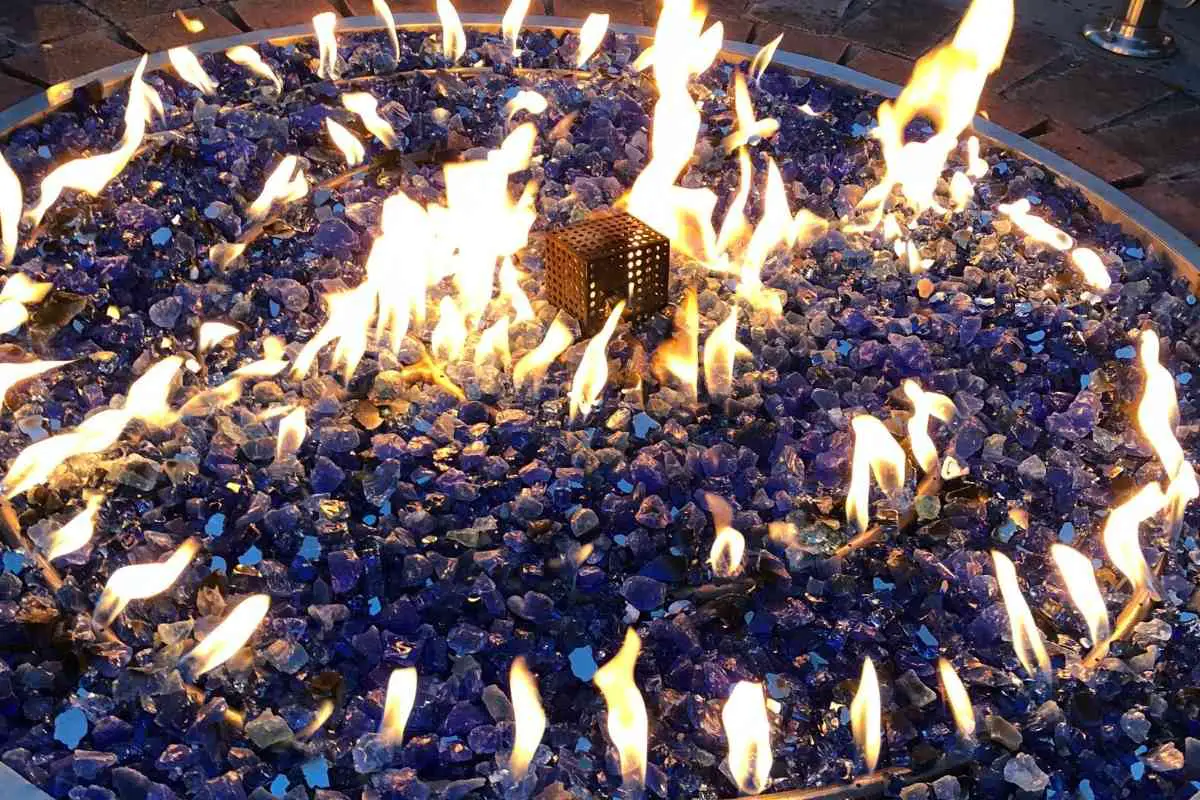Forgive the pun, but fire pits are hot right now! They’ve really taken off as a great setting for outdoor entertaining and make a cozy spot all year round.
There are so many reasons to install a fire pit in your yard but before you build it’s really important to ensure that the material you use will be truly safe.
In particular, rock seems like the most fireproof material around. But many a well-worn camper will tell you that the wrong rock can frankly explode in your fire.
Exploding rock is more common than you think, so its essential to choose the right kind of rock for your fire bit.
In This Article – We’ll explain why you should exercise caution when using rocks and stones for your fire pit and point you toward safe materials like lava rock that won’t become ballistic missiles when you heat them up!
Using the right materials keeps your fire pit safe
It’s easy to think that you can just throw anything you want into your fire pit.
But for safety, the fire pit structure and the actual composition of the fire have to be carefully considered as many materials that you think are fireproof, weren’t designed to be exposed to sustained heat and flame.
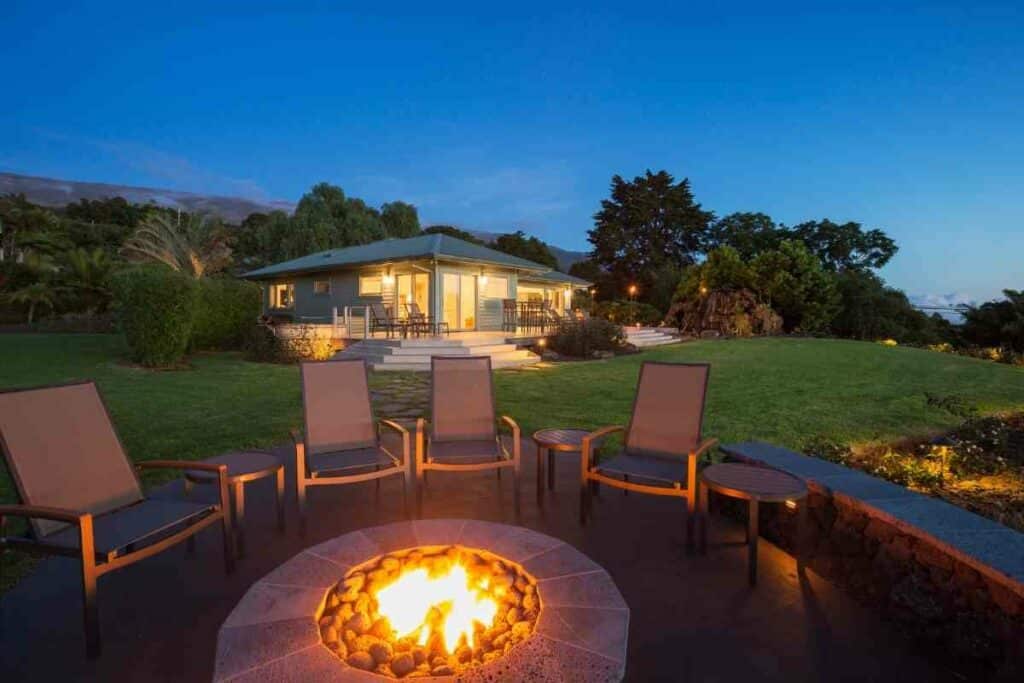
Materials like sand, gravel, and certain kinds of rock just can’t take the furnace-like conditions of a fire pit and can frankly explode.
Large river rocks and boulders look great but can crack or explode, so caution is best when using them.
If you want to put rock deep down in your pit, you can use lava glass beads and lava rock as a filler on a stone or concrete base as these materials are less likely to ignite or explode.
You can also use volcanic ash as a filler as you build your fire pit.
Some rocks can explode in a fire
It’s important to note that with the right amount of heat just about any wet rock can explode!
In particular, porous rock that has pockets of air and moisture within it can shatter as the fire heats the water and air, causing it to expand rapidly.
Absolute no-nos for your fire pit rock include:
- River rocks
- Pumice
- Gravel
- Limestone
- Sandstone
These rocks have a tendency to hold water and are far more likely to explode in the presence of sustained heat than hard, dense rocks like marble, slate, or granite.
On the other hand, lava rock is one of the safest types of rock to use in a fire pit, along with fire-rated brick, concrete, and lava glass.
Be careful lighting your fire pit after it has rained as even these rocks may have absorbed some moisture.
Ideally – Keep any rocks in your fire pit as dry as possible. If you can, cover it after use.
Lava rock is one of the best choices for a fire pit
Lava rock, also known as basalt, is well-known as a suitable structural and filler material for a safe fire pit.
This is because lava rock is not flammable, so you don’t have to worry about it potentially igniting while you enjoy your fire.
Given its name, lava rock is extremely heat resistant and would require temperatures far beyond those your fire pit can achieve to physically or chemically change.
Lava rock is named because it is formed from the lava from a volcanic eruption. It is one of the most common types of rock and forms up to 8% of the surface of the earth.
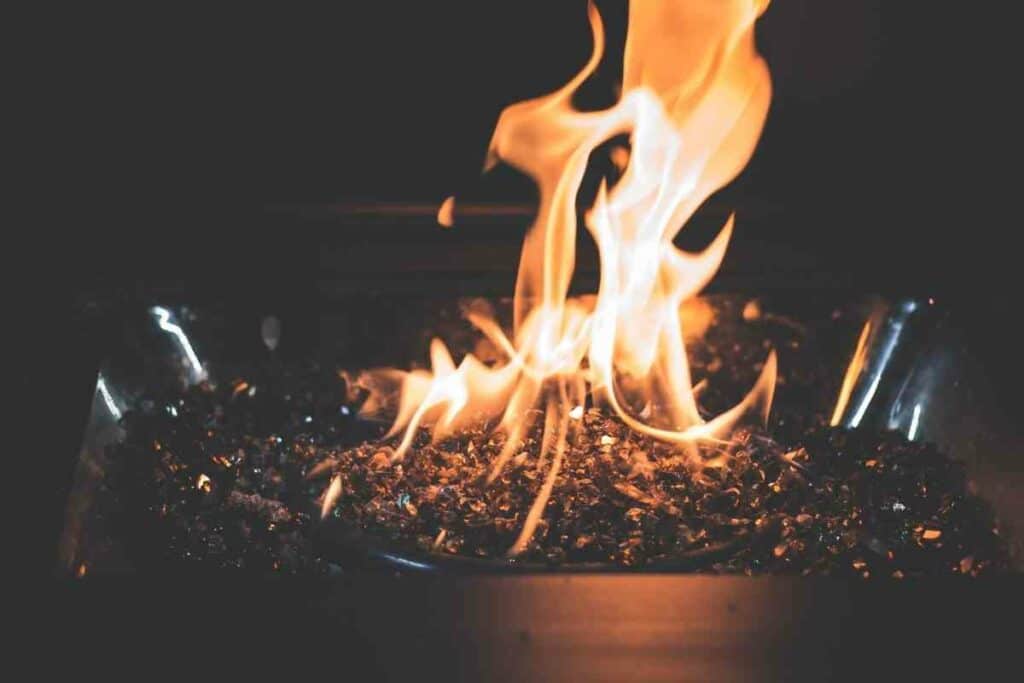
It’s a popular fire pit choice because it is widely available and very cheap, meaning you can use a lot of it to get your pit just the way you want. Get lava rock from hardware stores or garden centers.
A key thing to remember about lava rock is that it can retain massive amounts of heat.
This means that the lava rock is likely to be red hot, hours after your fire has been fully extinguished.
Just because the rest of the fire is cool, does not mean that your lava rock will be safe to handle.
It must cool completely or it can cause a nasty burn. Make sure you keep children or pets well away from the pit area with a barrier to prevent access.
Other safe materials for your fire pit
The right materials can really enhance the appearance of your fire pit while being safe to use around an open fire.
If lava rock is a little too monotonous for you, this list of materials includes some great options for a stylish fire pit display.
Natural Stone
Natural stone Is a popular material for building a lasting fire pit.
Great picks include granite marble or quartz chips that won’t spark or spread flames.
As long as the porosity is low and the thermal resistance is high, they are a fireproof choice that you can use confidently.
Refractory bricks
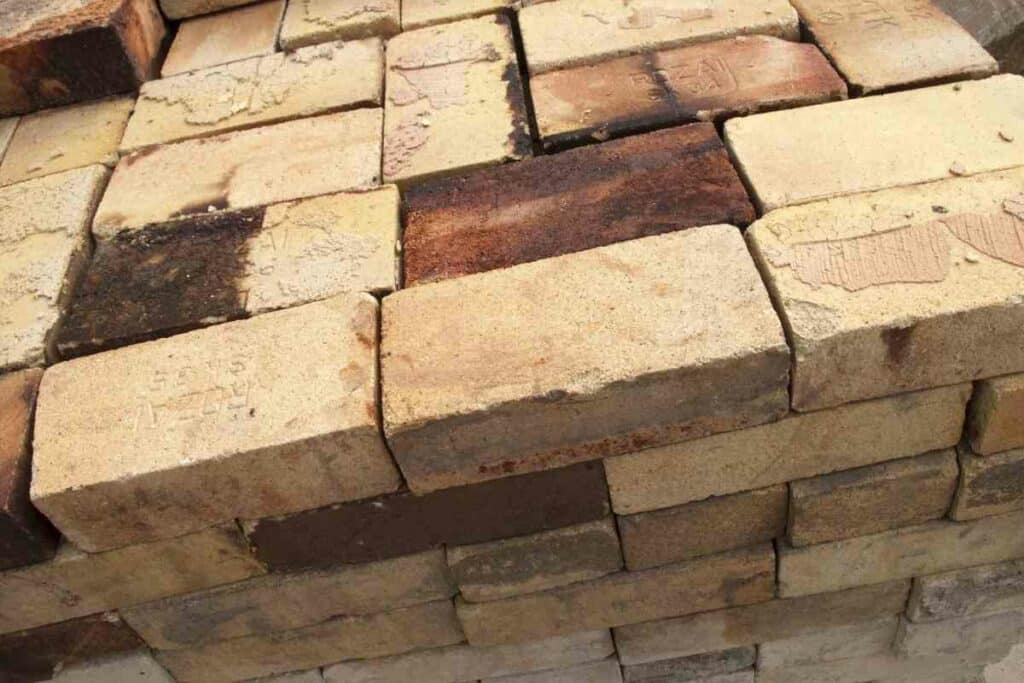
Refractory bricks are a type of clay brick that will not crumble in high heat when used as part of a fire pit.
These fire bricks a kiln-fired to extremely high temperatures and are larger and denser than regular building bricks.
Though it costs more than regular brick, fire bricks are durable and will withstand repeated exposure to fire.
Porcelain
Porcelain is surprisingly durable, and porcelain tiles make a great base for a fire pit.
Check with the manufacturer of the porcelain tiles to ensure that they are a suitable grade for exposure to high heat and flames.
Cast-on-site concrete
Cast-on-site concrete is a reliable fireproof material that you can use to create a modern or minimalist fire pit or line an existing structure.
Look for a commercial-grade blend with high early strength and add stone, gravel or sand for an optimal mix.
Ceramic logs
Ceramic logs are becoming a popular decorative feature.
These logs look like regular wooden logs but will withstand the high temperatures and keep your fire looking great even after the wood has burnt away.
Plus they’re smoke-free!
Steel and iron fire pit logs
Steel and iron fire pit logs and stone are a low-maintenance feature that retains and radiates heat throughout the night.
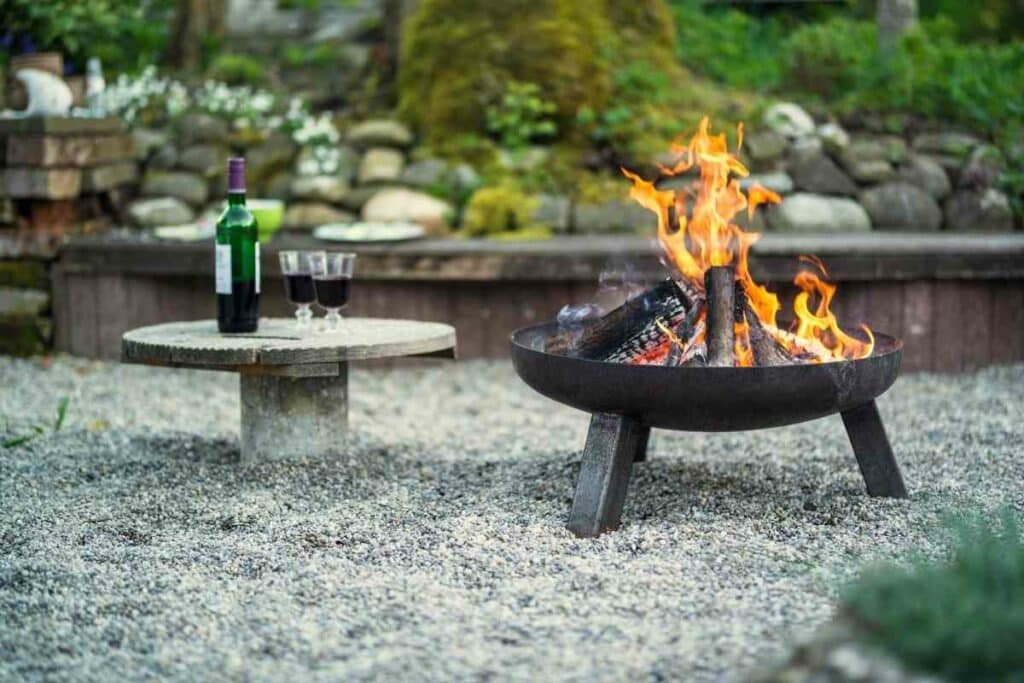
Their heat dispersal makes them a great choice for winter and harsh weather and they age beautifully as they become sooty, rusted, and weathered.
Ceramic glass
Ceramic glass is a type of transparent ceramic that can be obtained as chucks or chips for decorating the surface of a small firepit.
Fire glass
Fire glass is tempered glass that can withstand the heat of your fire.
You can add it safely to the fire pit as chips, cubes, diamonds, crystals, beads and glass pebble. It also comes in a wide range of colors.
A fire pit liner can also add a layer of protection when using rocks and stones
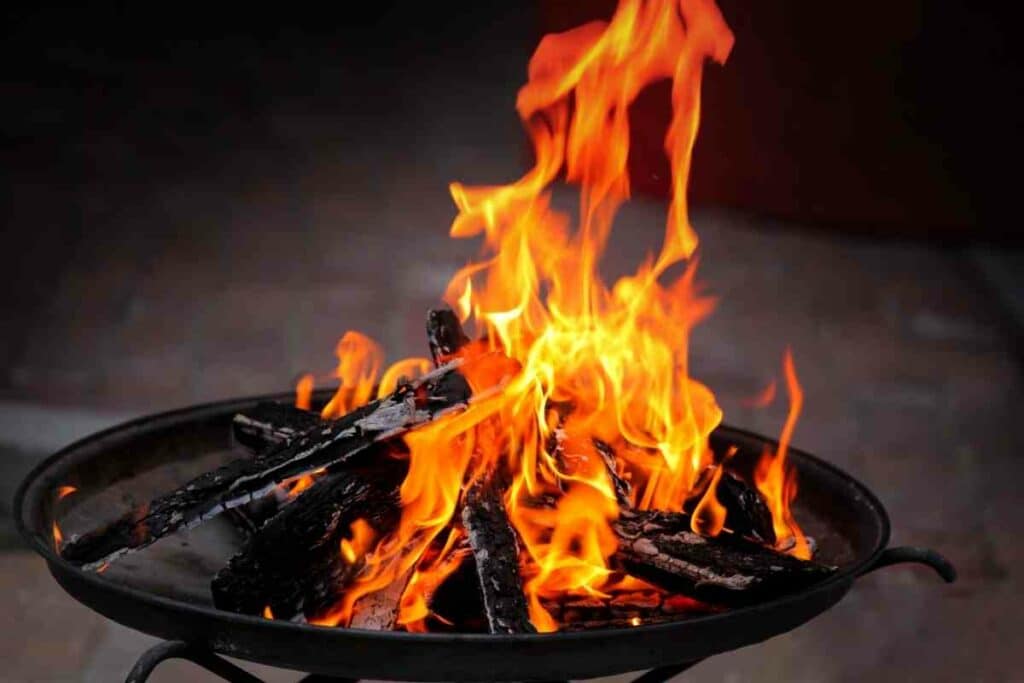
You can line your fire pit with a stainless steel, concrete, iron or copper interior insert that protects the rocks and stones that you use in your pit from direct heat.
Liners are useful if you have a sunken fire bit as they are an effective barrier to prevent underground root fires and provide the pit with additional support.
They also give the fire pit a clean, smart finish and make cleaning and maintenance easier.
If you decide to use a pit, ensure that you maintain airspace between the liner and the fire pit.
Last-minute fire pit safety tips
Though a fire pit is certainly a place where you can relax and unwind, safety is paramount.
These quick pointers will help you keep yourself, your family and your property safe when using a fire pit.
Make sure that you comply with city codes
Check local building ordinances and city codes to ensure that your fire pit is permitted and compliant.
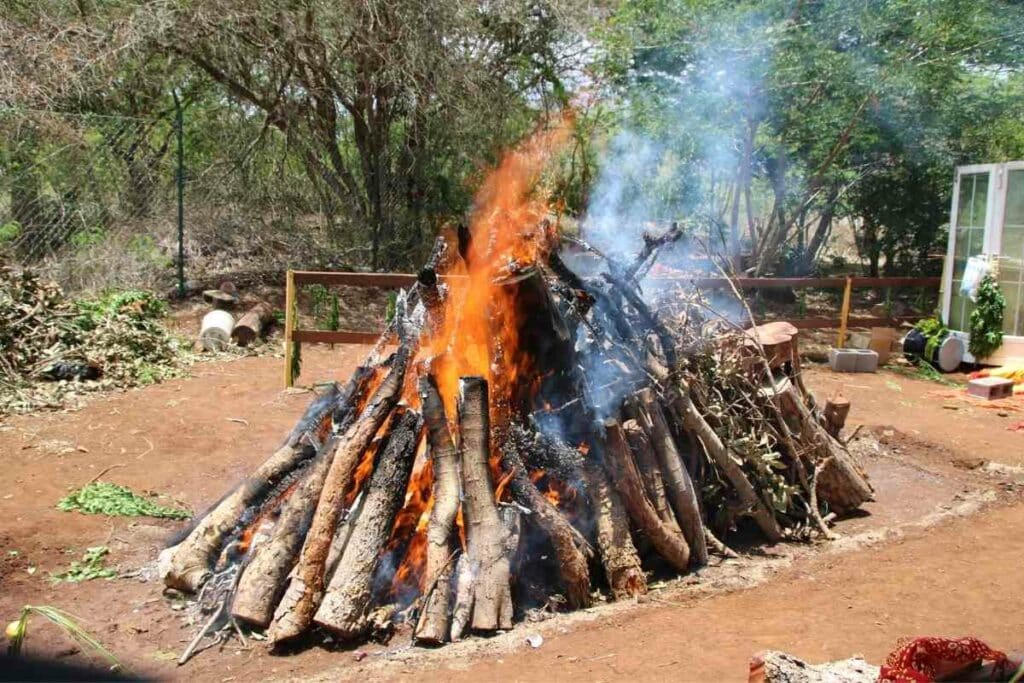
In many locations, open fires and burning wood are strictly prohibited.
There may also be restrictions on the time of day you can start your fire.
If In Doubt – Get advice from your local fire department.
Permanent or portable?
Decide if you want to build a permanently raised or sunken backyard fire pit from brick or stone or opt for a fire bowl or fire table.
If you self-build, care with the materials is essential to ensure that you dont include porous materials that could explode.
Location
If you are choosing a location for your fire pit, make sure that it is at least 10 feet away from buildings and flammable structures like fences or trees.
The fire pit should be well clear of awnings, branches or vegetation that could catch fire from the pit’s sparks and flames.
For a sunken pit, check with utility companies that your excavation won’t hit any of your property’s utilities.
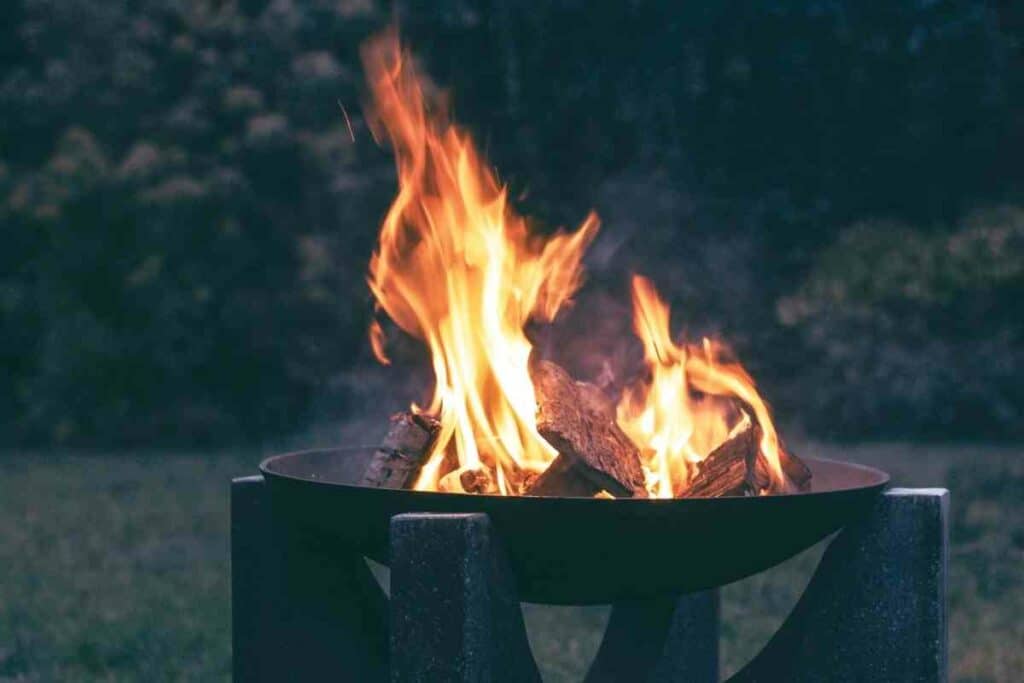
Supervise the fire at all times
Even though your fire pit is outside, you should never leave it unsupervised.
Do not leave the fire pit to burn out overnight.
Children and pets should not be able to access the fire pit area until it is fully extinguished.
Means of extinguishing the fire
Always have a large bucket of water or extinguisher on hand to put out the fire quickly if necessary.
Stop adding fuel to the fire at least an hour and a half before you want to extinguish it.
Let it burn down and douse the remaining embers. Remember that stone and metal may still be extremely hot after the flames have gone.
Rounding up
Fire pits are a great reason for spending more time in your backyard and a well-made and attractive fire pit can even add value to your home!
It’s tempting to add large smooth boulders or add gravel to your fire pit but caution is always advised.
With the wrong materials, a beautiful family fire pit can become the stuff of nightmares.
Dodge the explosions by opting for truly fireproof materials like lava rock that are dry and part of a supervised fire.
